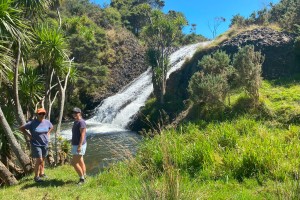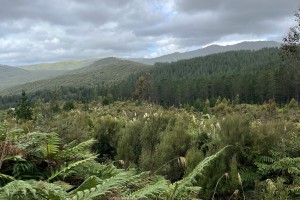Ki te kore te tāngata e manaaki i tōna taiao, Ka kore te tāngata e whai oranga
If people do not take care of the environment, we are not taking care of our own health and well-being.
There is a Tiriti obligation on the part of agencies and institutions, local government and central government to include mana whenua as part of any climate change adaptation approach, plan or policy. At Manaaki Whenua, Kaihautu Māori Research Impact Leader Dr Shaun Awatere leads a team of researchers building tools to help Māori landowners to make informed land management decisions through a te ao Māori lens.
The Huringa Āhuarangi, Huringa Oranga research area recognises hapū and iwi in their role as kaitiaki by using both mātauranga Māori and science to build resilience programmes.
Shaun says the research helps Māori landowners to make informed decisions about climate change adaptation from a te ao Māori approach. “The way mana whenua see themselves within te taiao (the natural environment) is different from a te ao Pākehā perspective,” he says.
“A te ao Māori perspective acknowledges the connections between people and te taiao and considers issues such as intergenerational equity. This includes mātauranga and the aspirations of Māori technologies that inform policies for climate adaptation that are often context-specific.
Shaun adds it’s important to engage with whānau, hapū, and iwi on a local basis to understand what the community needs to be resilient to a changing climate.
The following three projects support the empowerment of mana whenua by using te ao Māori approaches for natural resource management and climate change adaptation. The projects are centred around what whānau, hapū and iwi need to build resilience through using adaptive strategies.





